Lebanese Wines – Ancient and Highly Awarded
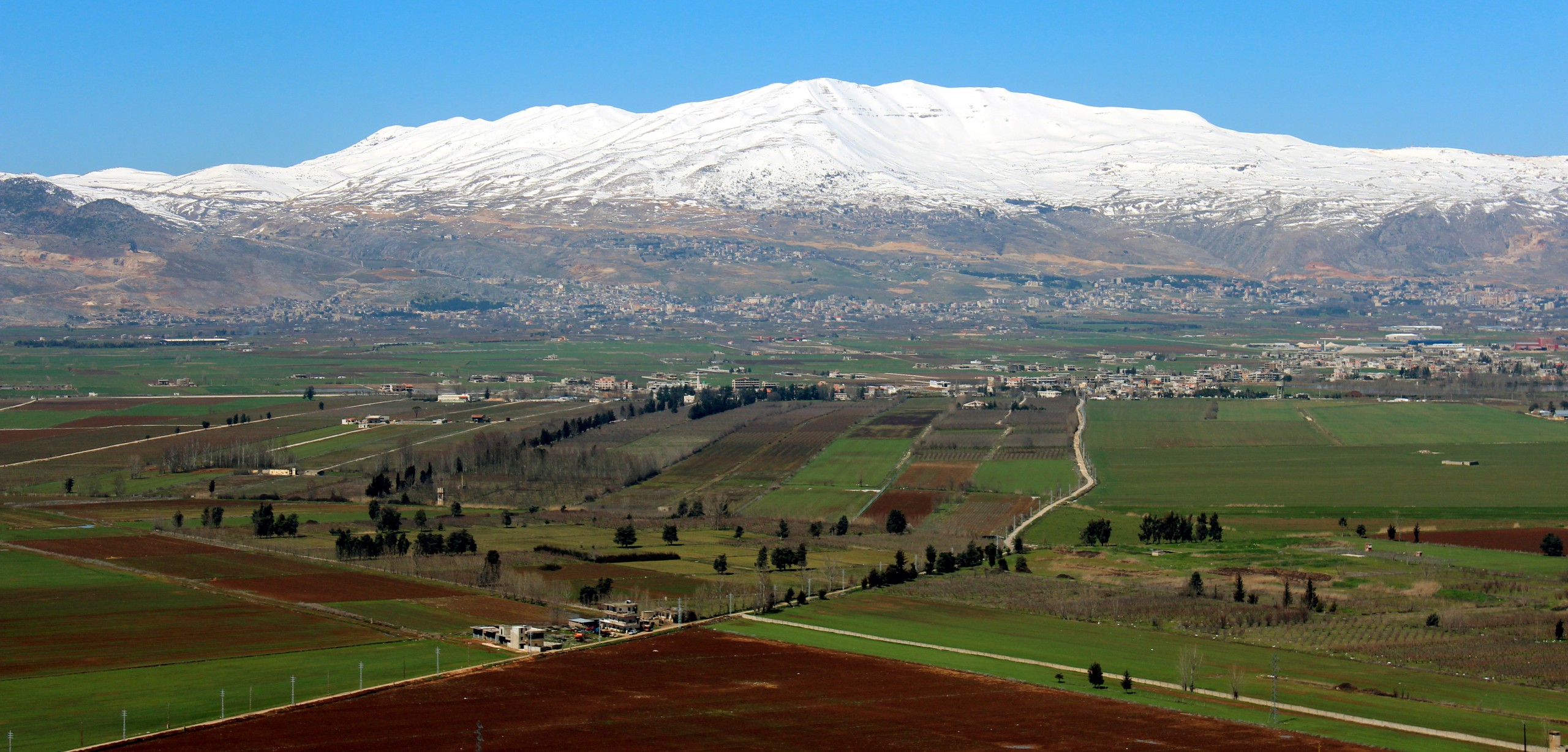
The vineyards of Chateau Musar, Bekaa Valley, Lebanon
.By Paul Shalhoub
The abundance of grapevines and grapes in season is obvious to any visitor to Lebanon. This is not surprising, given the Middle East is the homeland of grapes. The Lebanese enjoy the fruit, eat their leaves and use their vines to provide a canopy to the summer sun. Grapes are used to make arak and of course wine. While Lebanon may not be the first country that comes to mind when thinking of the world’s greatest wine regions, it does have one of the longest traditions of wine making and its Chateau Musar winery is world renown, featuring in the top ten of the World’s most admired wine brands.(1) This shouldn’t be a surprise as the Bible records Jesus turning water into wine at the wedding of Cana in biblical Canaan of which Lebanon was part of. (2) Likewise, the quality of Lebanese wine was recognised in the Old Testament: “the scent thereof shall be as the wine of Lebanon.”(3)
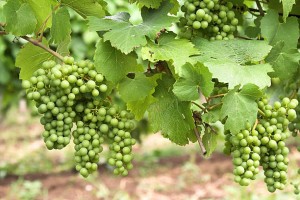
Lebanese green grapes
The history of wine is thought to date back some 8,000 years and potentially long before this. Thought to have been accidently discovered by eating over-ripe grapes it was only a matter of time before its properties became popular. Scientists believe that 8,000-year-old earthenware pottery fragments, discovered in southern Georgia are the first scientific evidence of wine making. The jars contained not only residual wine compounds but bore images of grape clusters and a man dancing.(4) While the location of the first wine making is disputed, what is not disputed is that Lebanon is among the oldest wine producing areas in the world. Its history is thought to date back over 5,000 years ago, when the Phoenicians domesticated grapes and were responsible for spreading wine and viticulture throughout the Mediterranean and likely all the way to France.(5)
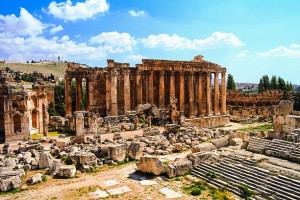
Ruins of the Temple of Bacchus in Baalbek, Bekaa Valley, Lebanon
Historically we relied on various corroborated evidence of Lebanon’s history of wine making, such as Egyptian hieroglyphics, Greek texts, the Bible, the Temple of Bacchus (the Roman God of wine) in Baalbek, drunken cupids on a 2nd century sarcophagus or terracotta amphorae (ancient storage vessels) – both on display at the National Museum of Beirut. (6) However, two recent discoveries have provided concrete evidence of Lebanese wine making and its export by the Phoenicians. In 1999, oceanographer Robert Ballard (discoverer of the Titanic) discovered two sunken Phoenician ships off the coast of Israel, over 1,000 feet below the surface. Scientists believe the ships travelled from Lebanon (Phoenicia at the time) and were lost in a storm on their way to Egypt or Carthage about 750 BC.(7) Laden with a cargo of wine stored in ceramic amphorae this find was consistent with previous evidence. Then, in late 2020 further concrete evidence was provided with archaeologists unearthing a 2,600 year old wine press in Tell el-Bural, near Sidon.(8) Grapes were brought here from nearby vineyards and crushed by feet in a basin that could hold some 5,500 litres of raw juice. The discovery is noteworthy for its dimensions, location and evidence of production for export.(9) Further, it supports the evidence from the sunken ships that the Phoenicians exported wine throughout the Mediterranean.
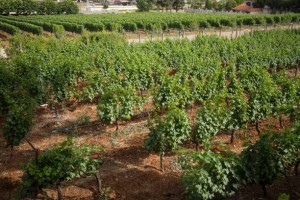
Vineyards, Zahlè. Valley of Beqaa, Lebanon – June, 2019
Lebanon’s modern wines are based on French technique and vines. There is none more famous than Chateau Musar. Founded by Gaston Hochar in 1930, when he was just 20 years old, it was inspired by Lebanon’s 5,000-year wine making history and Hochar’s travels in Bordeaux, France. The Chateau Musar Red is their flagship, and Lebanon’s most awarded wine. It is a blend of Cabernet Sauvignon, Carignan and Cinsault from their vineyards in the Bekaa Valley. Interestingly their winery is in Ghazir (in the Keserwan district near Lebanon’s Casino) some 2 hours away. This is because when Hochar founded the winery in 1930, Lebanon’s boundaries were not confirmed, and he wanted to ensure that his winery was inside the newly formed boundaries. In 1984 Decanter Magazine nominated Gaston’s son, Serge Hochar, as their first ‘Man of the Year’, recognising his dedication to producing superb wines throughout Lebanon’s Civil War (1975-1990).
“Of all the history that influences us, it is the Roman temple at Ba’albek that paved our way with the most authority. As Serge Hochar said: ‘This is the only serious temple erected to Bacchus [the god of wine] anywhere in the Roman world. And they put it here, in the Beka’a. Why? Because the Romans and Greeks, the Phoenicians and Minoans, and all peoples who came before them, all knew that the Beka’a is the spiritual home of wine.”(10)
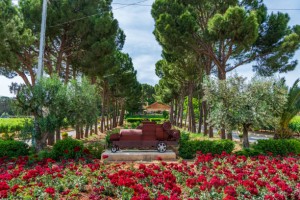
Chateau Ksara, Baalbek, Lebanon – Entrance to Chateau Ksara Winery in Baalbek, Lebanon.
The oldest winery in Lebanon.
The history of Lebanese wines is both fascinating and a continuing tradition. Undoubtedly, the award-winning Chateau Musar red wine is truly remarkable. The WLCU Sydney is pleased to have secured, from the Australian importer, the remaining 2012 vintage for our signature wine at this year’s En Route to Beirut Gala event on December 11th 2021.

WLCU President Dr Shane Geha with the award-winning Chateau Musar red wine 2012 Vintage.
(1) Drinks International: The world’s Most Admired Wine Brands 2021 https://drinksint.com/news/fullstory.php/aid/9490/The_World_s_Most_Admired_Wine_Brands_2021_Revealed.html
(2) Into Wine: Wine from Lebanon: History, Varietals, and Producers | IntoWine
(3) Hosea 14:7 – https://www.biblegateway.com/verse/en/Hosea%2014%3A7
(4) BBC News: ‘World’s oldest wine’ found in 8,000-year-old jars in Georgia – BBC News
(5) Wikipedia – Lebanese Wines Lebanese wine – Wikipedia
(6) Gourmet Traveller Wine – Lebanese wine focus Lebanon – Wine Focus (gourmettravellerwine.com)
(7) MIT News: MIT technology helps map ancient Phoenician shipwrecks | MIT News | Massachusetts Institute of Technology
(8) National Geographic, History article: 2,600-year-old Phoenician wine ‘factory’ unearthed in Lebanon (nationalgeographic.com)
(9) Wine Spectator article: 2,600-Year-Old Wine Press Discovered in Lebanon, but What Were They Drinking? | Wine Spectator
(10)Chateau Musar Website: https://chateaumusar.com/chateau-musar-the-story-of-a-wine-icon/
